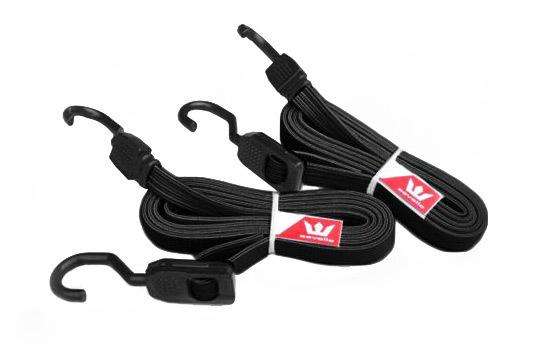Introduction
Buying direct from the manufacturer signifies a strategic approach in procurement, where businesses acquire products straight from the entities that produce them, thereby bypassing various intermediaries like distributors and wholesalers. This method stands as a cornerstone for a myriad of retailers and entrepreneurs looking to streamline their sourcing procedures and enhance the authenticity and quality of the procured products.
This concept is pivotal as it allows businesses to gain more control over their supply chains, fostering stronger and more transparent relationships with the manufacturers.
This closer collaboration often results in enhanced customization options and more effective communication regarding product specifications, quality expectations, and delivery timelines, allowing businesses to better align their product offerings with consumer needs and market trends.
In a market environment characterized by an ever-increasing demand for quality and value, adopting such direct procurement strategies can be a game-changer. It can facilitate optimized cost structures, enabling businesses to offer competitive pricing to their customers while maintaining healthy profit margins.
However, as advantageous as it may seem, buying directly from manufacturers also presents its own set of challenges and complexities. It necessitates a thorough understanding of both market dynamics and the intricate facets of the manufacturing sector. It demands diligence, strategic foresight, and effective management skills to navigate potential risks and leverage the inherent benefits successfully.
The direct buying model’s significant advantages and disadvantages create a multifaceted impact on business operations and strategic orientations. Grasping these nuances is essential for businesses aiming to make informed, judicious strategic decisions that align with their overarching goals and operational contexts.
Understanding the implications of buying direct is not merely about acknowledging its operational aspects; it’s about delving deeper into its strategic dimensions, analyzing its long-term impacts, and aligning it with the holistic business vision to drive sustainable growth and competitive advantage in the ever-evolving market landscape.
Advantages of Buying Direct from Manufacturer
One of the most conspicuous advantages of purchasing directly from manufacturers is cost-efficiency. The elimination of middlemen allows businesses to avoid markups, potentially leading to better prices and volume discounts.
This direct approach facilitates better quality assurance, offering businesses direct quality control and customization opportunities, ensuring products meet specified standards and consumer needs.
Furthermore, buying direct fosters enhanced communication and relationships between manufacturers and buyers. It opens avenues for better negotiation opportunities and establishes clearer, direct communication channels, enabling swift resolutions of concerns and queries.
This interaction allows exclusive access to products, granting first-hand access to new or custom products that might not be available through other channels.
Enhanced supply chain management is another significant advantage. The direct interaction streamlines processes and reduces lead times, enabling businesses to better manage inventory and respond to market demands promptly.
Disadvantages of Buying Direct from Manufacturer
However, buying direct also comes with its set of challenges. One major drawback is the requirement of minimum order quantities. Manufacturers often require large orders, posing investment risks, especially for small retailers.
Managing logistics can also be challenging as businesses need to handle shipping and importing, assuming increased responsibilities and potentially encountering complications.
Another limitation is the restricted product range available. Buyers are usually limited to a manufacturer’s catalog, resulting in a lack of variety, and possibly necessitating partnerships with multiple manufacturers to diversify the product range. This lack of variety can also lead to a lack of wholesale pricing opportunities, and small retailers may miss out on negotiation leverages, facing potentially higher costs.
Managing relationships with multiple manufacturers adds another layer of complexity, proving to be time-consuming and presenting various operational challenges. Balancing these relationships requires significant effort and meticulous attention to detail.
Conclusion
Opting for purchasing direct from manufacturers unveils numerous advantages such as enhanced cost-efficiency, guaranteed quality assurance, fortified relationships, exclusive access to products, and augmented supply chain management, each pivotal in maintaining a business.emechmart that stands out in today’s competitive markets.
However, this approach is not without its significant disadvantages, including the imposition of minimum order requirements, overarching logistical challenges, a potentially limited product range, absence of wholesale pricing opportunities, and the inherent complexities in establishing and managing relationships with multiple manufacturers.
The strategic decision to engage in direct buying necessitates meticulous evaluation of these diverse pros and cons, taking into account the specific needs, contextual elements, and capabilities inherent to the business.
It’s imperative for businesses, especially platforms like business.emechmart, to introspectively analyze whether the tangible and intangible benefits realized through this model outweigh the potential disadvantages within their unique operational context and whether such an approach seamlessly aligns with the strategic objectives and operational framework of the business.
The journey toward establishing a successful direct buying model is laden with intricate nuances and requires businesses to make well-informed, deliberate decisions. This is particularly crucial for platforms like business.emechmart, aiming to navigate the inherent challenges successfully and capitalize on the lucrative opportunities this model offers.
After all, these strategic considerations and choices significantly mold the business’s trajectory, influencing its sustainability, growth, and overarching success in the highly competitive and ever-evolving market landscape.
It’s crucial to underscore that every business operates within its unique ecosystem, and there’s no universal approach or one-size-fits-all strategy in the realm of direct buying from manufacturers. It’s paramount for entities, especially ones operating platforms like business.emechmart, to tailor their procurement and operational strategies meticulously to resonate with their business model, operational requisites, market dynamics, and long-term visionary goals. This ensures a harmonious, balanced, and holistic approach to direct buying, enabling businesses to thrive and sustain in the intricate web of manufacturer relationships and market demands.

As the editor of the blog, She curate insightful content that sparks curiosity and fosters learning. With a passion for storytelling and a keen eye for detail, she strive to bring diverse perspectives and engaging narratives to readers, ensuring every piece informs, inspires, and enriches.










